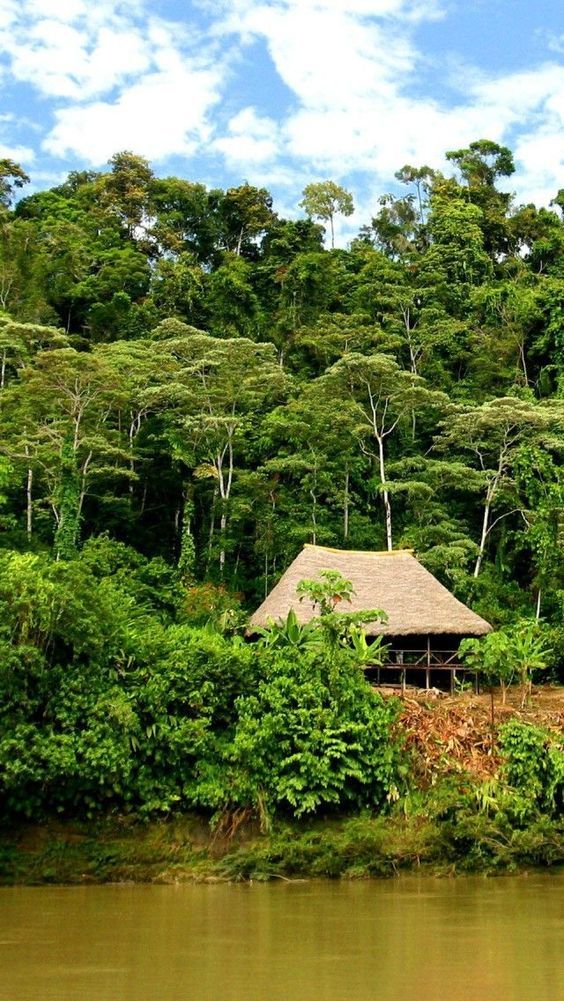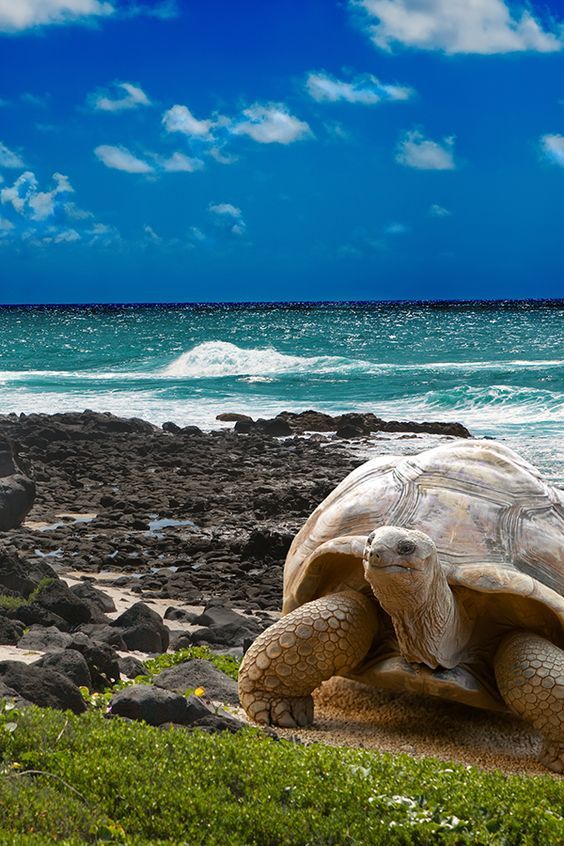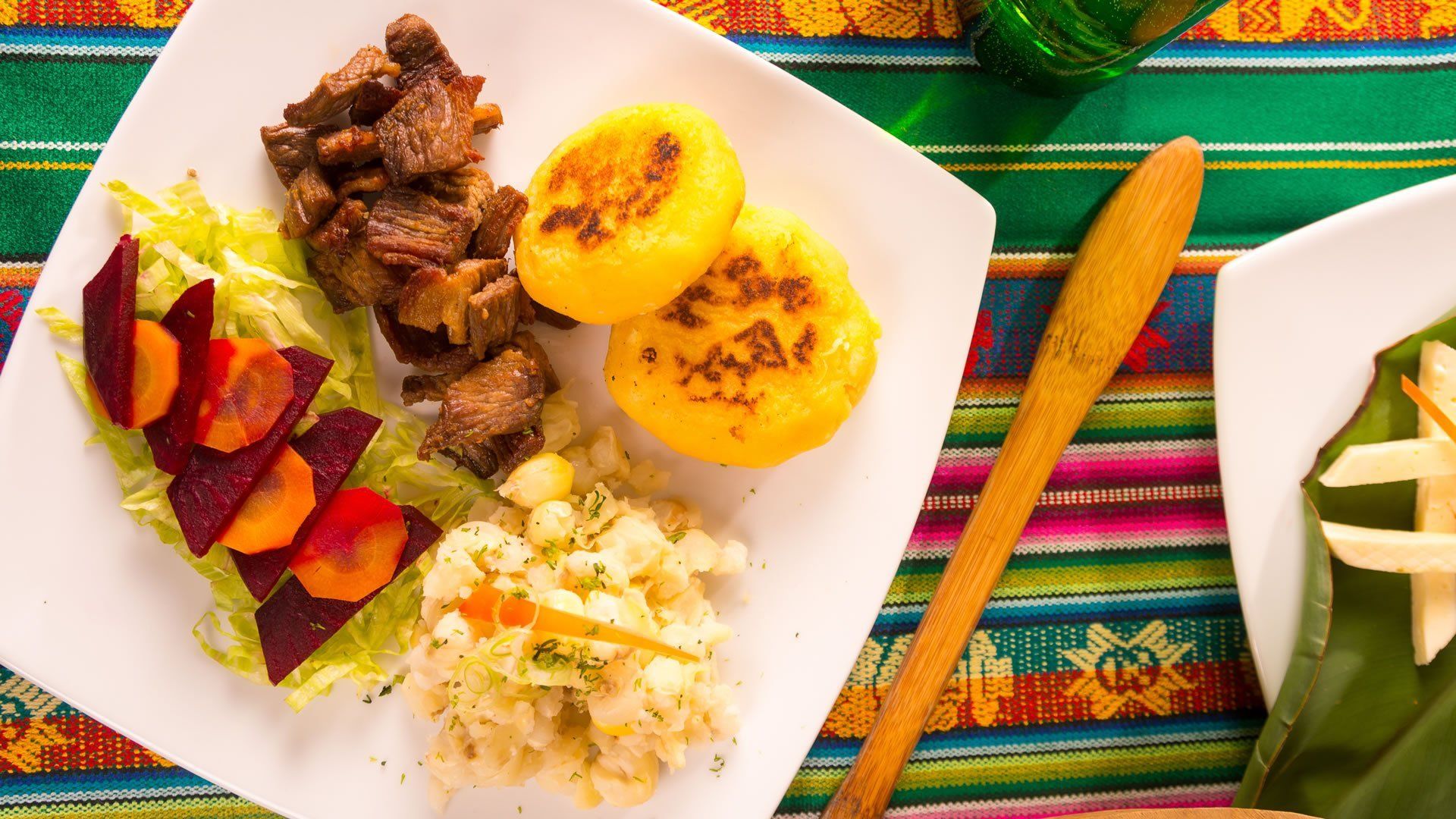Ecuador trip
Ecuador is a country of tropical rainforests, active volcanoes and paradisiacal beaches, as well as colorful cities shaped by its colonial past.
Experience Ecuador
– Four Regions – Two Hemispheres – One Country –
Covering an area of 256,370 km, Ecuador is divided into four regions that contain the diversity of the Amazon topography, the natural beauties and cultures of the Andes, the eco-friendly beaches of the Pacific coast and the famous Galapagos Islands.
Ecuador has the world's greatest biodiversity - fauna, plants and animals!!!
Our travel destinations in Ecuador.
Cities, nature parks with high volcanoes, enchanted islands and tropical rainforests - Ecuador is a country with a multitude of unique travel destinations.
Quito, the center of the world
The capital sits amidst active volcanoes at an altitude of 2,850 m and is one of the oldest cities in America.
The ancient capital of the Indian kingdom of Quitus-Caras was first conquered by the Incas and then by the Spanish. It was the latter that shaped the history of the city, as evidenced by the historic center full of colonial palaces, villas and churches built of volcanic rock and richly decorated with gold.
Quito was the first city in the world to be designated a UNESCO World Heritage Site in 1978 for its rich history and cultural heritage.
Guayaquil, the pearl of the Pacific
It is known as the Pearl of the Pacific because the old city had several wooden palaces that gave the city great beauty, but very little remains of its colonial past due to looting by pirates who set the city on fire.
Guayaquil is the largest and most populous city in the country (with more than 3.1 million inhabitants in the urban area) and is also the most important port, commercial and industrial center of the region and Ecuador.
Bathed by the waters of the Guayas River and surrounded by tropical rainforest, the city is a cosmopolitan metropolis, home to diverse nationalities from around the world.
Latacunga, god of the lagoons
The small town is located in the center of the Republic of Ecuador at 2,771 meters above sea level.
Its name derives from the words "LLacta Kunka", which means something like: god of the lagoons, carved in volcanic rock, in reference to its numerous water sources.
Latacunga is the starting point of the expedition trips to the Cotopaxi National Park, an important tourist attraction of the region, whose volcano of the same name has a height of 5,897 m.
Baños, a benchmark for extreme sports
The full name is Baños de agua santa (Sacred Baths) because the hot springs have been considered miraculous since pre-Inca times.
Baños is not only known for its natural hot springs (which come from the Tungurahua volcano and can reach a temperature of up to 55 degrees), but due to its mountainous jungle orography, it also offers a wide range of extreme sports such as bungee jumping, rafting, canyoning, etc.; it is just a step away from the Amazon jungle that fills the area with exotic fauna and flora.
Riobamba, the city of firstfruits
It was so named because it was the first city founded by the Spanish conquerors in 1534. Before that it was the capital of the Puruhas kingdom, which was called Liribamba.
From the valley where the city is located, you can see several volcanoes, including the most important and largest, Chimborazo, closest to the sun at 6310 meters.
The city has been devastated in numerous earthquakes, so the architecture in general is a mix of colonial baroque and more modern styles.
Riobamba is the starting point for expeditions to Chimborazo Volcano.
Cuenca, das Athen Ecuadors
In 1999 the old town of Cuenca was declared a World Heritage Site. According to the UNESCO document, Cuenca is recognized for "the beauty of its historic center with a particular type of republican architecture" and "the harmony it maintains with its geographical environment".
The third largest and most important city in Ecuador is 2550 m above sea level and is called the Athens of Ecuador because it is the birthplace of many philosophers, musicians, poets and scientists, but also because of its cultural diversity. During the Cañaris rule it was known as Guapondelig, after the Inca conquest it changed its name to Tomebamba and became one of the most important cities of the empire.
The Spaniards baptized it Cuenca in 1557 in honor of the city of the same name in Spain.
In the surroundings of the city are the ruins of one of the largest Inca architectural complexes in Ecuador, the Temple of Ingapirca, and the Cajas National Park with its valleys and lagoons teeming with lush fauna.
sun, sea and sand
The beaches in Ecuador
Ecuador has 4817 square kilometers of coastline. The coastal region is washed by the waters of the Pacific and is characterized by a year-round warm climate. The white volcanic sand beaches are perfect for relaxing and enjoying the sunsets, the turquoise waters are teeming with marine life and there is a chance to spot whales, dolphins and sea lions.
The region consists of numerous towns and villages with a good hotel infrastructure.
On the Ruta del Sol, a magnificent road that runs along the Ecuadorian coast, the journey begins in the town of Salinas (located at the westernmost point of South America, with 5-star hotels, bars and nightclubs), passes through the resorts of Montañita ( known as the surfing capital of Ecuador) and reaches the town of Puerto Lopez (where you can watch whales).
Little Galapagos
Silver Island
The 5.9 square kilometer "Silver Island" is located in Machalilla National Park, 23.6 km from the Ecuadorian mainland. Her name alludes to an alleged silver treasure that the corsair Sir Francis Drake is said to have hidden.
Often referred to as the backpacker's Galapagos, the island offers the attractions of the Galapagos Islands and is home to birds such as the blue-footed booby, Galapagos alvatros, dolphins, whales and sea turtles. The island is a good place to practice diving.
Multicultural tastes
Gastronomy in Ecuador
Due to the different regions, climates, ethnicities and cultures, Ecuador has a gastronomic diversity to offer: Ecuadorian cuisine is influenced by the different cultures that have entered the country, a mixture of native and foreign cultures that Ecuadorians today call "comida criolla " (Creole cuisine).
On the coast and on the Galapagos Islands, the food is usually very fishy, e.g. B. tuna, sardines, goldfish, shrimp and crab, products that Ecuador is known for.
Called the green banana or plantain, it is regularly used in the preparation of various dishes.
In the highlands, corn and potatoes are the main protagonists of meals, pork is usually eaten instead of beef, and in some regions cuy (guinea pig) is also eaten as a culinary delicacy.
While in the Amazon, products like yucca, river fish and other exotic animals like tapirs and chontacuros (large coconut tree worms) are available for the more adventurous to sample.
cultural interaction
Markets in Ecuador
There is no better place to learn about the cultural diversity of a region than to visit its markets.
In every city of Ecuador there are markets where you can buy a variety of items, jewelry, clothing, handmade items made of exotic leather, etc.
The offer is always very diverse and the sellers are also ready to offer a good price for the customer.
Want more about our
Find out about the travel program?
Visit our itinerary for more information
interested in a trip
to Ecuador?
Contact us!

Write us an e-mail with your interests and we will make you a very personal offer.













